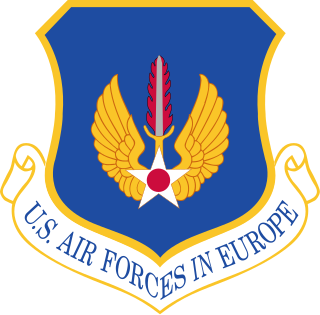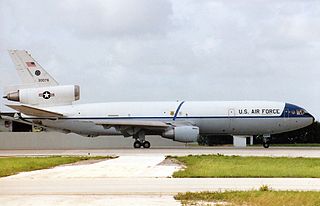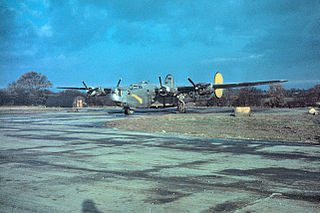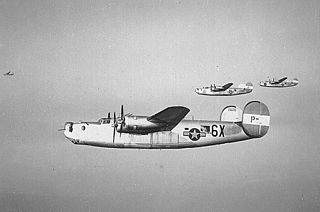| United States Strategic Air Forces in Europe | |
|---|---|
 United States Strategic Air Forces emblem | |
| Active | 22 February 1944 – 7 August 1945 |
| Country | United States of America |
| Branch | United States Army Air Forces (1944–1945) |
| Role | Command and Control |
| Garrison/HQ | Bushy Park, England February 1942 – September 1944 St Germain-en-Laye, France September 1944 – August 1945 |
| Engagements | World War II Victory Medal European Campaign (1944–1945) |
| Commanders | |
| Notable commanders | General Carl Spaatz |

The United States Strategic Air Forces in Europe (USSTAF) [1] was a formation of the United States Army Air Forces. It became the overall command and control authority of the United States Army Air Forces in the European theater of World War II.
Contents
- Formation of USAFE
- Lineage
- Assignments (not complete)
- Stations
- Components (not exhaustive)
- See also
- References
USSTAF had started as the Eighth Air Force, a complementary command to that of the smaller Ninth Air Force, Twelfth Air Force, and Fifteenth Air Forces. As the oldest command, which had begun the earliest American operations in Europe as VIII Bomber Command, the Eighth had provided British liaison and strategic tasking guidance to each of those younger organizations throughout the war.
With the in-depth Allied contacts and overall responsibility directly affecting the strategic bombing of industrial regions of Germany the Eighth's planning and intelligence staffs were the natural best choice to assert overall coordinated control with the D-Day Operation Overlord needs of the Allies, under General Dwight D. Eisenhower as Supreme Allied Commander. Subsequently, the strategic bombing effort's intelligence, targeting and planning, co-ordination, including mission designation command and control were separated—not without controversy and opposition—from actual operations commands in direct control of air forces on 23 February 1944. The new command was organized on the large nucleus of Eighth Air Force planning staff members, thereby creating the USSTAF—at which time the USSTAF was also given mission planning control over other US Air Forces opposing Germany and Italy, and shrinking the man-power assigned to the Eighth Air Force.
The USSTAF was established with the redesignation of the former VIII Bomber Command as the Eighth Air Force on 22 February 1944. The strategic planning command staff of what had formerly been the Eighth Air Force became a higher echelon command coordinating with the British in the target prioritization of the strategic bombing of the Axis. In this expanded role, USSTAF exercised operational control of the reorganized Eighth Air Force, administrative control of the Ninth Air Force in the European Theater of Operations and, to an extent, the operations of Twelfth and Fifteenth Air Forces in the Mediterranean Theater of Operations—all of which had theretofore carried out their own strategic planning. VIII Fighter Command was brought under the command of the newly redesignated Eighth Air Force, while VIII Bomber Command was inactivated.
Beginning in March 1944, Air Service Command, USSTAF progressively took over all base service functions. IX Air Force Service Command did away with its base air depot area and on 17 May transferred its most important installations (Philipps House in Dinton, Wiltshire, near Baverstock [2] and Filton) to the Air Service Command, USSTAF, which continued to use them to provide base services for the Ninth. [3]
There is some difference of opinion about the USSTAF insignia/emblem. Most sources state the letters stand for United States Strategic Air Forces in Europe. However, there is evidence indicating – at least initially – it was United States Strategic & Tactical Air Forces. [4] [ page needed ] [5]



















